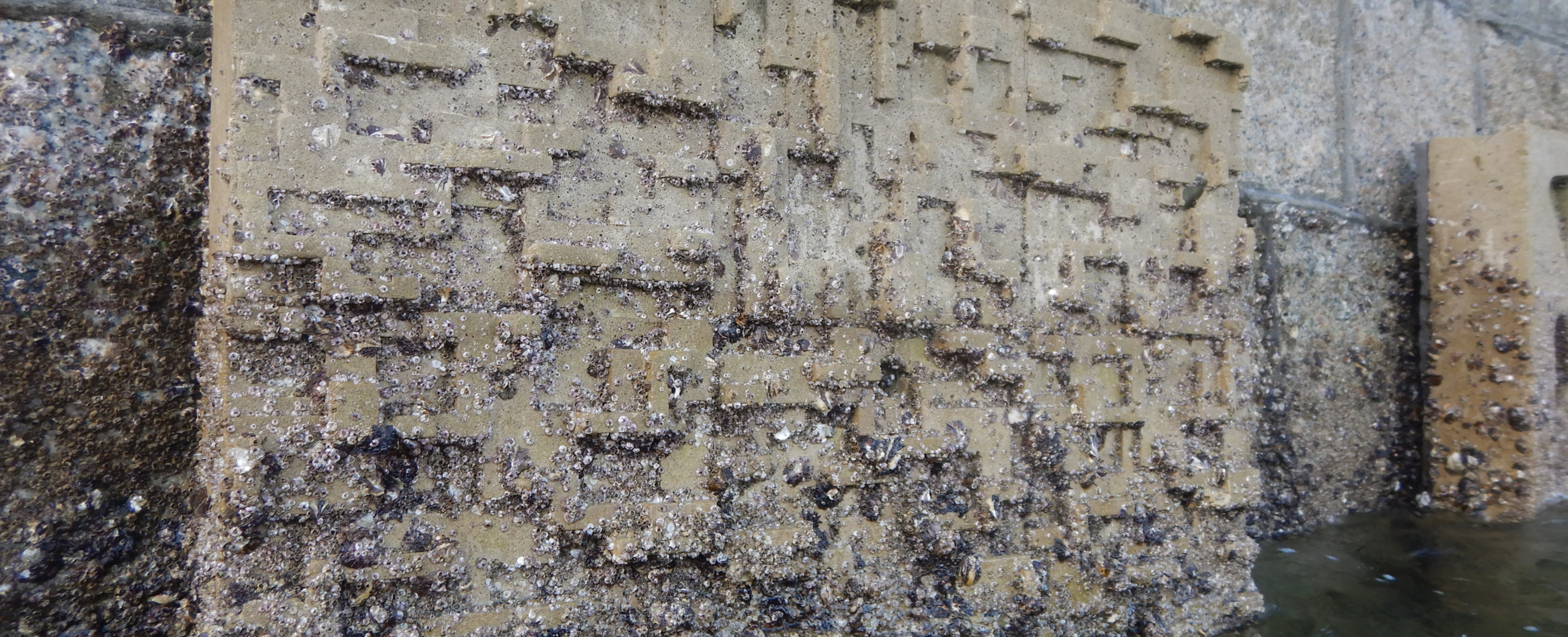Caught in a tradeoff
Ports and marinas are an essential part of urban coastlines. They facilitate international trade, serve as important hubs of economic activity, and in some cases serve as trustees, managing public urban waterfronts. While performing these critical services, ports face a challenge when it comes to the infrastructure that supports their activities.
Port infrastructure such as seawalls, breakwaters, and piers are usually concrete based. While concrete is a strong, versatile, and affordable material for building our urban waterfronts and ports, it is destructive to marine life.
When weighing costs and benefits of marine construction projects, ports can be caught in a tradeoff: building infrastructure that improves their operations and can adapt to more severe coastal conditions, or taking pains to meet climate action goals such as lowering carbon footprints and increasing biodiversity.
What if a tradeoff was taken off the table? What if critical infrastructure could be built sustainably?
When traditional concrete doesn’t meet modern challenges
Why is traditional concrete unsustainable? The answer lies in its interaction with the environment and the materials used to create it.
Concrete production is responsible for 8% of global carbon dioxide emissions. Once installed in the water, concrete infrastructures’ chemical compositions and smooth, featureless surfaces make it difficult for marine life to grow on and around the concrete, further destabilizing our oceans.
Not only does the lack of life on and around our port infrastructure lower our chances of revitalizing marine ecosystems, it also has surprisingly harmful impacts on the infrastructure itself. Repairing or replacing traditional seawalls can cost hundreds to thousands of dollars per linear square foot, making consistent maintenance a costly burden, especially with a warming and more energetic ocean. With the help of marine organisms, however, it is possible to have ecologically friendly and structurally sound concrete infrastructure.
How does living infrastructure work?
Natural coastal systems have immense value. Even when only considering moderation of extreme events, like hurricanes, these systems are worth over $12,ooo per hectare per year. When summed, all of the services these ecosystems provide humans (including food, climate regulation, and recreation) can be worth over $84,000 per hectare every year, with coral reefs worth over $150,000 per hectare.
Living infrastructure captures some of the value of natural ecosystems that would otherwise be completely lost by using 100% Portland-cement-based traditional concrete. By mimicking principles of natural environments, also known as biomimicry, coastal concrete infrastructures can recreate some of the functionality and biodiversity of their rocky predecessors.
Three design innovations can help concrete come to life:
Adding ECOncrete admix seals concrete, preventing toxins harmful to marine life from leaching out. This balanced surface chemistry encourages more marine life, and more native marine species to colonize concrete in a much faster period of time. While the infrastructure serves as a home for marine organisms, some of the organisms help armor the structure through a process called bioprotection. Bioprotection is when calcifying organisms, animals that use calcium and carbonate to form their shells, grow and cement their skeletons onto the structure. This helps to strengthen the structure and allows the concrete to act as a carbon sink.
Incorporating surface complexity into infrastructures mimics structurally diverse, porous marine rocks. In contrast to the smooth planes familiar to us from traditional concrete port infrastructures, complex surfaces create the micro-currents sedentary marine species, like filter-feeding oysters, need to attach to the concrete surface. Filter feeders can have incredible impacts on water quality and clarity by removing some pollutants from the water column. For 1 linear meter of seawall, filter feeding animals like mussels, tubeworms, and oysters can filter 45 Olympic swimming pools worth of seawater, or 2.7 million liters.
The designs of traditional infrastructures, like seawalls, or interlocking single-layer armor generally don’t mimic the functionality of natural coasts. For example, these infrastructures don’t retain water at low tide, and therefore don’t provide shelter and breeding spaces for marine life. Through biomimicry and specialized design, concrete infrastructure can allow species to behave naturally, promoting thriving ecosystems in port waters.
Living infrastructure in action
In 2014, an experiment was conducted at Herzliya Marina to compare standard Portland cement and ECOncrete sea walls. ECOncrete’s sea walls differ from standard concrete walls in three ways: concrete chemistry, surface complexity, and macro-design. With this nature-inclusive engineering , ECOncrete’s sea walls reap the benefits of a mutually beneficial relationship with nature.
22 months post-deployment, the ECOncrete seawall units were covered with a variety of beneficial invertebrates, while the original marina seawall (the control wall) had a low diversity of organisms. The results show how in less than two years, ECOncrete’s technology transformed seawalls, recruiting a more diverse collection of invertebrates in comparison to standard Portland cement.
The increased number of organisms living on ECOncrete’s structure contributes to stability, thanks to wave dissipation from a rougher surface and increase durability through bioprotection.
The higher biodiversity results in a resilient, stable ecosystem, which lowers environmental mitigation and penalty costs. With its plethora of positive impacts on the environment, living infrastructures help ease the burden of strict environmental regulations.
Making sustainable seawalls a reality
Ports are key actors in driving environmentally and structurally sound waterfronts. The Port of Vigo in Spain, for example, is partnering with ECOncrete to showcase a new standard for port infrastructure.
In the LIVING PORTS project, the Port of Vigo, Cardama Shipyards, DTU and ECOncrete are working to showcase ready-for-market, ecological infrastructure, and to incorporate this new standard into marine construction best practices. In taking advantage of this opportunity to transition to environmentally friendly concrete, the Port of Vigo is closer to reaching its ambitious goal of zero carbon emissions by 2030 .
As the biggest fishing port in the word, the implementation of living infrastructure at the Port of Vigo will revitalize marine ecosystems and help trailblaze a new generation of port leadership.
